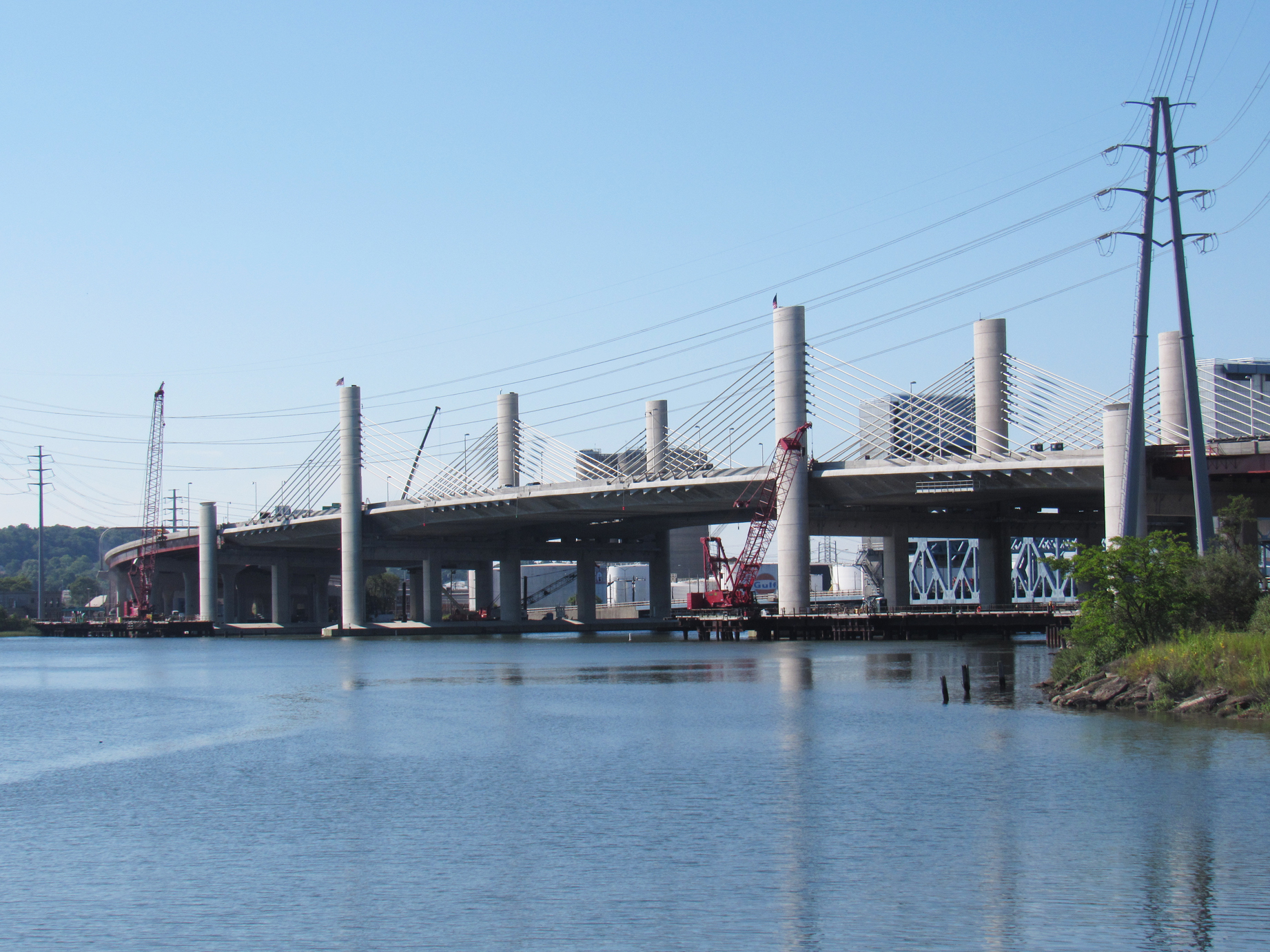
Courtesy Wikimedia Commons
New Haven’s Pearl Harbor Memorial Bridge was presented with the grand prize in the America’s Transportation Awards competition on Nov. 14, deeming it the “best of the best” transportation construction projects completed in 2016.
The Pearl Harbor Memorial Bridge — the Connecticut Department of Transportation’s largest undertaking to date — was one of 84 project entries participating in the competition, sponsored by the American Association of State Highway and Transportation Officials, the American Automobile Association and the U.S. Chamber of Commerce. After being recognized by the three organizations on Sept. 9 for its “best use of innovation” out of entries from the Northeast, the bridge became one of 12 transportation projects from across the country to be considered for the grand prize.
“The Pearl Harbor Memorial Bridge scored the highest points [in the competition’s assessment of the entries], making it the best of the best in the country this year,” said Tony Dorsey, a spokesman for AASHTO.
He added that the bridge — commonly referred to as the Q-Bridge because of its location above the Quinnipiac River — won because of various factors, such as its under-budget cost and timely completion.
Although the bridge was initially planned as a $417.6 million project, the final cost came down to around $415.7 million, according to Matthew Briggs, a DOT project engineer who has worked on the project for the past eight years.
The bridge’s construction was also part of the $2.2 billion I-95 New Haven Harbor Crossing Corridor Improvement Program, which was conceived by the DOT in 1999, according to the project’s website. It was also completed under budget, with $200 million to spare.
“We built a new bridge in the footprint of an old bridge, maintaining traffic and never once reducing lanes, and got the job in on time and under budget, which is very satisfying,” Briggs said.
The Q-Bridge’s “extradosed” design also contributed to its success in the competition, Dorsey said. The Q-Bridge combines features of the common plate-girder and cable-stay bridge designs, and is one of the first of its type in the country.
The novel design was a result of constraints on the bridge’s parameters given the barges that pass underneath and planes that pass over it frequently. To pass underneath, barges require greater clearance than would be provided by a typical plate-girder design. Air traffic from the Tweed New Haven Airport in nearby East Haven, on the other hand, disqualified a normal cable-stay design because of the tall, potentially hazardous pillars necessary to suspend the structure.
The former Q-Bridge, a plate-girder bridge erected in 1958, had three lanes in each direction and could accommodate 40,000 trips per day, which Briggs said was impressive for that era. As traffic volume rose over time, however, the structure failed to accommodate the 140,000 trips that now rely on its service. Now, the new bridge boasts five lanes in each direction and can accommodate an estimated 160,000 vehicles per day.
“We’re very proud of the Q-Bridge,” said Mark Rolfe, the DOT transportation construction administrator. “It’s the first of its kind in this country.”
In light of the award, the project received praise from local and state officials, who see the bridge as a step towards an improving economy and infrastructure system. In a Nov. 16 press release, Gov. Dannel Malloy applauded the workers who made the construction possible, and said the bridge is a “truly remarkable accomplishment” in the state’s ongoing effort to improve transportation infrastructure. He added that a “best-in-class” transportation system helps the state grow jobs, attract new businesses and improve residents’ quality of life.
“The fact that our state is being recognized nationally speaks volumes about what projects like these mean in regards to providing commuters with a modernized transportation system,” Malloy said in the press release.
In a separate press release, Malloy said this project marks a turning point from a time when the state neglected to invest much-needed funds in transportation improvements.
In a statement to the News, Mayor Toni Harp also praised the project, highlighting the bridge’s commemoration of the 1941 attack on Pearl Harbor.
“World-class and nationally prominent architecture has been part of the New Haven landscape literally for centuries,” Harp said. “I’m delighted the city’s newest skyline feature has drawn this most-recent, favorable attention. With towers that pay tribute to World War II battleship smokestacks, the Pearl Harbor Memorial Bridge is both a solemn reminder of that day of infamy and living testimony to New Haven’s rich nautical heritage.”
The grand prize was awarded to the state’s DOT along with $10,000 to be donated to a scholarship or charity of the DOT’s choice. As of Tuesday evening, a recipient had not been chosen, but Rolfe said the sum would likely go to a local New Haven charity or scholarship organization.







